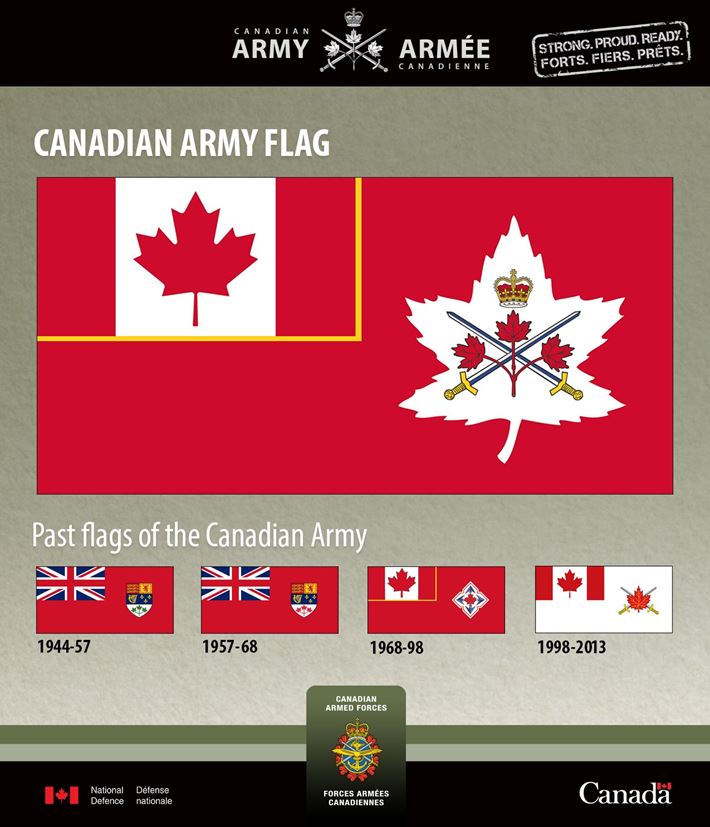With Remembrance Day just around the corner I thought I would share a short list of some of the most significant battles involving Canada's Armed Forces. I admit there are many, many more that deserve to be on this list but as a start, I have listed 10 below. Lest We Forget....
1) Battle of Vimy Ridge (April 9 – April 12, 1917)
The Battle of Vimy Ridge occurred during the Battle of Arras, a British offensive in the north of France near the Belgian border. The objective of Vimy Ridge was to capture the German position at the northern most end of Arras to prevent the Germans from pounding the advancing southern forces with artillery. This battle marked the first time in the war that all four Canadian divisions fought together and has been a symbol of nationalistic achievement and sacrifice ever since. It is arguably the most famous battle fought by Canadian forces in the 20th century.
At the end of the three days, close to 3,600 Canadians had been killed, and another 7,000 had been wounded. It is estimated that 4,000 German soldiers were taken prisoner.
2) Battle of Hong Kong (December 8 – December 25, 1941)
Less than eight hours after the Japanese raid on Pearl Harbour, 52,000 Japanese soldiers descended on Hong Kong from the neighbouring Guangdong province. In defense of Hong Kong were 14,000 British troops including soldiers from India, and close to 2,000 Canadian soldiers. By December 11, the British forces were forced to evacuate from Kowloon, and by December 13, they had been pushed back to Hong Kong Island. The Japanese quickly achieved air supremacy in the first days of fighting, and the remaining ships of the Royal Navy had been ordered to retreat to Singapore. On December 18, Japanese forces landed on Hong Kong island, and a week later, British forces surrendered.
All 1,975 Canadian personnel were either killed, wounded, or taken prisoner. Hong Kong civilians suffered 7,000 casualties during the battle itself. The Battle of Hong Kong marked the first time a British colony had surrendered to an invading force
.
3) Dieppe Raid (August 19, 1942)
The main objective of the Dieppe Raid was to seize and hold the port of Dieppe for a short period of time in order for the allied forces to sabotage German defenses and to gather intelligence from captured German prisoners and from the assessment of the German response. It was, in short, a disaster. The plan called for a traditional frontal assault up the beaches, which was held off by German machine gun positions. Coupled with ineffective Armour and Artillery support, no Air support, and poor intelligence of the German forces in the area, commanders were forced to call a retreat four hours after the start of the battle. No main objectives were achieved.
The Canadian forces suffered just under 3,400 casualties in those four hours compared with the 600 casualties suffered by the Germans. If there is a bright side in all this, the allied forces learned major lessons from Dieppe, which would lead to the success of the Normandy landings almost two years later, including the development of specialized armoured vehicles, the realization of the need for heavier naval artillery bombardments beforehand, and the inclusion of a preliminary aerial bombardment. It has been said that “For every man who died in Dieppe, at least ten more must have been spared in Normandy in 1944.”
4) Battle of Ortona (December 20 – December 28, 1943)
Ortona sits on the eastern coast of Italy, bordering the Adriatic Sea. By 1943, it was one of the few usable deep water ports remaining in Italy, which made it a valuable objective for the Allies. Winston Churchill would later call the Battle of Ortona “Little Stalingard” in reference to the close-quartered fighting that occurred over the eight days. The Canadian forces prevailed using a new tactic they dubbed “mouse-holing” where a hole would be blown through the shared wall of adjacent houses. The Canadians would then throw in grenades and assault through the upper floor.
The Canadians suffered 1,375 fatalities during Ortona, with another 964 men being wounded. After 8 days, the German forces, who had been ordered to “fight for every last house and tree” withdrew, their losses were unknown.
5) Juno Beach (June 6, 1944)
The D-Day landings at Normandy was the successful attempt of the Allied forces to gain a foothold and to begin retaking Europe. On the first day, 170,000 men landed on the beaches of Normandy, 21,400 of these being Canadians tasked with clearing “Juno” Beach. In comparison, Juno Beach was the second most heavily defended beach of the five with pillboxes and fortifications lining the entire beach with the water heavily mined. However, Juno was defended by one of the weakest divisions in Normandy consisting of static German troops with no transport capabilities and no combat experience, augmented with Soviet “volunteer” troops from the east.
By the end of D-Day, the Canadians had advanced close to 10km into France, the furthest out of the Allied forces. Following D-Day, the Canadians linked up with British forces advancing in from neighbouring Sword beach. The Canadians suffered 1,000 casualties on the first day of the Normandy invasion, including 340 deaths.
6) Battle of the Scheldt (October 2 – November 8, 1944)
With the Allied forces stretched for hundreds of kilometers from Normandy to the French/German border, there was an urgent need to secure the ports of Antwerp to ease the logistical burden of supplying the invasion forces. After the failed Operation Marketgarden, the Germans had ample time to prepare their defenses around the Scheldt estuary. The five weeks of fighting were marked with numerous amphibious assaults, obstacle crossing, and assaults over open ground. The Germans defended the Scheldt with artillery and snipers and both the water and land were heavily mined.
At the end of the battle, the Canadians had suffered just under 6,400 casualties, half of all the Allied casualties in the Scheldt. This led to another conscription crisis back at home. The Germans suffered similar casualties to the Allies, in addition to the 41,000 prisoners who surrendered to the Canadians. The loss of Antwerp was a huge strategic blow to German forces, and it was one of the objectives marked out for the Battle of the Bulge in mid-December.
7) Battle of Kapyong (April 22 – April 25, 1951)
The Battle of Kapyong, during the Korean War, saw Australian and Canadian forces defending the Kapyong valley, en route to Seoul, against forces from the Chinese Communist People’s Volunteer Army. On April 22, an estimated 10,000 Chinese soldiers flooded into the Kapyong valley in an attempt to dislodge the Australians and Canadians. Despite being outnumbered at least five to one, the Canadians and Australians were better equipped and better trained than the Chinese combatants. After nights of heavy bombardments, on both sides, and waves of attackers, the Chinese were forced to withdraw from the valley in the late afternoon of April 25th.
Throughout the ordeal, the Canadians suffered a total of 33 casualties. In contrast, the Chinese forces retreated leaving behind an estimated 1,000 dead soldiers. The Battle of Kapyong is the most famous action undertaken by the Canadian forces during the Korean War. Total casualties between 1951 and 1953 include 1,558 Canadian soldiers – 516 of those as fatalities.
8) The Vietnam War (November 1, 1955 – May 15, 1975)
Though the Canadians never took part in any battles during the Vietnam War, I have included it in this list due to the unfortunate impression that Canada did nothing during the Vietnam War. It is estimated that Canada sold $2.47 billion worth of war materiel and supplies to the United States between 1965 and 1973. Canadian facilities were used for training and weapons testing by the US forces. Around 30,000 Canadians volunteered to join the US forces to fight in south-east Asia. As well, Canada deployed a small force into Vietnam to enforce the 1973 cease-fire. 110 Canadians were killed in Vietnam.
9) Battle of Medak Pocket (September 9 – September 17, 1993)
The Battle of the Medak Pocket took place during Canada’s peacekeeping mission in Croatia. During 1991, Croatia moved for independence from Yugoslavia, resulting in Croatian Serbian rebels establishing the internationally unrecognized Republic of Serb Krajina. Major human rights violations occurred, perpetuated by both the Serbs and the Croatians before a ceasefire was agreed on. The UN sent in peacekeeping forces to police the area. On September 9th, the Croatians violated this ceasefire and attacked Serbian forces. When the Canadian peacekeepers were sent in, the Croatians attacked them as well, believing that the Canadian forces would instantly withdraw, as previous UN forces had done before due to their restrictive mission mandates. This was not the case, and the Croatian commander quickly negotiated a cease-fire and withdrawal with the Canadian commander.
Four Canadians were wounded by Croatian artillery as the peace-keeping forces took up the abandoned Serbian positions. Depending on the source, the Croatians suffered either 27 casualties (Canadian) or 94 casualties (Croatian). However, there is still continual denial of this incident occurring in Croatia, due to the discovery of war crimes committed by the Croatian forces.
10) Battle of Panjwaii (July 2006, September – October 2006)
The first phase of the Battle of Panjwaii occurred during the summer of 2006, where Canadian forces, supported by Afghan forces, went into the Panjwaii area in Afghanistan to clear Taliban strongholds. Fighting lasted from July 8th to August 19th. After July, following the departure of Canadian and Afghan forces, the Taliban quickly re-established their hold over Panjwaii. The second phase was spearheaded by the Canadians again forcing the Taliban to retreat after weeks of fighting. The Taliban are no longer present in large numbers in Panjwaii.
Throughout the fighting, the Canadian forces sustained 16 fatalities, including Canada’s first female combat arms casualty, and another 50 soldiers wounded. Sadly, the vast majority of these casualties came from a friendly fire incident where an American A-10 strafed Canadian Forces who had called in an air strike on Taliban positions. It is estimated that Taliban forces suffered between 500 – 1,000 casualties in these months.
Some notable omissions: Battle of Somme, Battle of the Atlantic, Liberation of the Netherlands





0
Log In or Sign Up to add a comment.- 1
arrow-eseek-eNo items to displayFacebook Comments